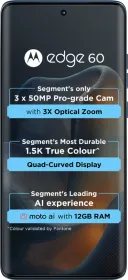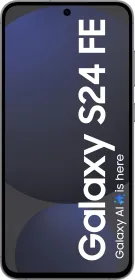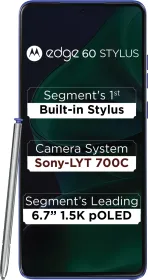Synology, a Taiwanese brand known for its network-attached hardware and software, has found itself at the center of attention over the past couple of weeks — and not entirely for reasons it would have liked. The company, long trusted by home users and small businesses for its reliable network-attached storage (NAS) solutions, made a controversial move: it’s now locking its “Plus” series models to only work with its own brand of hard drives. That means if you want to use the latest Synology DiskStation models, you’ll have to forego familiar favorite NAS drives from Seagate, Western Digital, and other drive makers. Clearly, this change has not gone well with the community, and they have been vocal about it in various forums.
But amidst the controversy, Synology also had something new to offer: the launch of its latest 4-bay NAS, the DiskStation DS925+, a direct successor to last year’s DiskStation DS923+. Designed for power users, content creators, and small office setups, the DS925+ brings a series of hardware upgrades and promises faster performance for tasks like Plex Media Server hosting, 4K video editing workflows, and hybrid cloud storage integration with Synology C2.
I’ve spent the past few weeks living with the Synology DiskStation DS925+, pushing it through real-world usage, from multi-device backups to heavy-duty media streaming. Based on that experience, here’s my full review of Synology’s newest NAS — and whether it’s worth upgrading in 2025.
Jump to :
Synology DiskStation DS925+ Price & Availability
The DS925 Plus comes in only the Black color option. You can add up to four Synology-branded drives. You can also expand RAM capacity but once again Synology restricts it to first-party options.
The Synology Diskstation DS925 Plus will be Amazon and in other retail stores. It’s suggested online price in India is ₹65,205.
Pros
- Compact, sleek design
- Reliable performance
- ECC RAM support
- Best-in-class software
- Snapshot replication of WORM folders
- Efficient power consumption
Cons
- No 10GbE upgrade option
- NVMe slots limited to caching
- No built-in GPU or Quick Sync
Synology DiskStation DS925+ Review: Design and Build
Unboxing the Synology DiskStation DS925+ feels refreshingly familiar if you’ve encountered a Synology NAS before. The company wisely sticks to its proven design philosophy, meaning the DS925+ closely mirrors the look and compact footprint of its predecessor, the popular DS923+. Measuring just 166 x 199 x 223 mm and weighing a manageable 2.25 kilograms (without drives), its physical dimensions make it easy to place.
Visually, the Synology DS925+ design is all about blending in. Its matte black plastic chassis resists fingerprints and avoids drawing unnecessary attention, making it a perfect fit for a tidy home office setup or a small business environment. This understated look is exactly what you want from a device designed for reliable, quiet background operation.

Speaking of quiet, Synology DS925+ noise level is impressively low. Smart ventilation is key here: subtle slots on the side panels handle passive airflow, while two 92mm fans at the rear only spin up when necessary. Even during heavy tasks like extended file transfers or Plex media server streaming, the fan noise was barely perceptible in my quiet room – a major plus for a quiet NAS server.
Like many Synology models, the DS925+ uses an external 120W power brick. While that might seem substantial, Synology DS925+ power consumption in typical, real-world usage is significantly lower, reflecting Synology’s long-standing reputation for building durable and energy-efficient NAS hardware.

Up front, usability is prioritized. You get four tool-less 3.5-inch drive bays, making Synology drive installation incredibly simple. Crucially, these are also lockable NAS drive bays, offering an extra layer of physical data security – a smart balance between convenience and peace of mind. Alongside the standard status LEDs (system, network, individual drives), there’s a handy front USB 3.2 Gen 1 port (Type-A), perfect for quick backups to an external drive. These aren’t flashy features, but thoughtful touches that demonstrate Synology’s focus on real-world NAS usability over chasing trends.
Ultimately, the DS925+’s design and build quality hit the right notes. If you’re searching for a reliable, user-friendly 4-bay NAS that operates quietly and doesn’t demand attention, the physical package of the DiskStation DS925+ delivers exactly that.
Synology DiskStation DS925+ Review: Hardware and Connectivity
While the DS925+ looks familiar on the outside, Synology has made some crucial upgrades under the hood. The biggest shift is the move from the older Ryzen R1600 to the more capable AMD Ryzen V1500B processor. This embedded CPU brings 4 cores and 8 threads to ensure significantly better Synology DS925+ CPU performance for multitasking, running Docker containers, and handling the lightweight virtual machine workloads many modern NAS users demand. It’s a practical, efficient choice – very much in line with Synology’s focus on stability.

Paired with the new CPU is 4GB of ECC DDR4 RAM installed by default. ECC (Error-Correcting Code) memory is a standout feature at this price point; it helps prevent silent data corruption, crucial for long-term backup reliability and file integrity. While the Synology DS925+ RAM is upgradeable to 32GB across two slots, there’s a catch: Synology officially requires using their own branded RAM modules, which come at a premium compared to standard options. Still, getting ECC RAM support out of the box is a significant win for prosumers and businesses prioritizing data safety.
The Ryzen V1500B isn’t just about more threads; it’s also more efficient, with a lower power draw (16W TDP vs. 25W) than its predecessor, contributing to cooler operation and potentially better long-term hardware reliability. Its improved cache and bandwidth also help feed the dual M.2 NVMe slots used for SSD caching. Setting up a Synology DS925+ NVMe cache can boost performance for frequently accessed files. However, these slots remain limited: you can’t use them for main storage volumes, and Synology restricts you to their own (often pricey and endurance-focused) SNV3400 series NVMe drives.

Personally, I feel most welcome hardware has happened in networking space. Synology finally ditches the aging 1GbE ports for dual 2.5GbE network ports on the DS925+. This allows for much faster Synology DS925+ network transfer speeds, especially noticeable in multi-user environments or homes/offices with multi-gigabit networks. You can use Link Aggregation (LACP) to combine the ports for potentially higher throughput (up to 5Gbps theoretically, though real-world speeds vary) or set up network failover for redundancy. It’s a major step forward. But, supprisingly, Synology has removed the expansion slot that allowed adding a 10GbE network card on some previous models. For video editors or studios needing the absolute fastest network connection, this omission could be a deal-breaker and makes the DS925+ 10GbE support non-existent without external adapters.

Another key omission is integrated graphics (iGPU). Like the DS923+, the V1500B CPU lacks graphics processing capabilities. This means the Synology DS925+ is not ideal for Plex hardware transcoding directly on the NAS. If real-time video transcoding is a primary need, you are recommended to look for Synology’s intel based models.
Despite these limitations, the DS925+ excels at its core tasks. In testing (with upgraded 16GB ECC RAM and four 8TB drives), it comfortably managed around 20 Docker containers and several lightweight Linux and Windows VMs simultaneously, showcasing solid Synology DS925+ Docker performance and virtual machine capability.
Storage flexibility remains a strength. The four main bays handle 3.5″ HDDs or 2.5″ SSDs. For those needing more space, the Synology DX517 expansion unit can be added, boosting the system to nine bays and potentially reaching a maximum storage capacity well over 100TB (Synology quotes up to 180TB with the largest supported drives). Synology rates the DS925+ for sequential read/write speeds up to 522 MB/s and 565 MB/s respectively – respectable numbers for small studios, home media servers, or businesses using Synology’s robust DSM operating system for hybrid cloud backup solutions.
Overall, the DS925+ isn’t about chasing the highest specs on paper. Instead, Synology has made targeted, meaningful upgrades, particularly the CPU and networking–focused on efficiency, stability, and the real-world performance needs of its core home office, prosumer, and small business audience.
Synology DiskStation DS925+ Review: Software and Performance
If you’ve used a Synology NAS in the last few years, the DiskStation DS925+ will feel familiar — and that’s mostly a good thing. It ships with DSM 7.2, Synology’s browser-based operating system that looks and behaves more like a well-designed desktop environment than the web interface of a typical storage box. It’s fast, responsive, and modern in all the right ways.
DSM hasn’t seen a visual overhaul in a while, but small under-the-hood improvements make everything feel snappier. File Station is still the easiest way to manage files over the network, with drag-and-drop support, real-time search, and instant media previews. Whether you’re syncing terabytes of data, sharing project folders, or just streaming video off your Plex library, the DS925+ stays unfazed, thanks in part to its Ryzen R1600 CPU and ECC memory that keeps things stable under load.
Synology continues to lead in its ecosystem. DSM isn’t just a file server UI — it’s a full-on app platform. You get Synology Drive for Dropbox-style file sync across Windows, macOS, iOS, and Android; Synology Office for collaborative docs and spreadsheets; Synology MailPlus and Chat for private self-hosted communication tools; and Active Backup for Business, which handles full-image backups of Windows, Linux, VMware, and even Microsoft 365 and Google Workspace — without any license fees. That last bit is key: most of what makes DSM powerful comes built-in, no nickel-and-diming.
Backup and disaster recovery tools are especially robust. Snapshot Replication allows near-instant rollbacks in case of ransomware or accidental deletions, and you can enable write-once (WORM) folders to protect critical data from tampering. In my setup, I layered Synology Drive with gsync, ran immutable snapshots on a 12-hour schedule, and used Active Backup to back up both a Google Workspace domain and a local Windows server — all running concurrently, without the system breaking a sweat.
Container Manager (formerly Docker) and Virtual Machine Manager are still here, and the DS925+ doubles the VM headroom compared to the DS923+, supporting up to 8 virtual DSM instances or VMs. In practice, I was running three containers (Nginx, Pi-hole, Homebridge) still it had enough performance headroom left for media streaming and remote access.
Speaking of remote access, the DSM 7.2 makes it easier than ever to keep your NAS secure without exposing it to the open internet. You also get built-in support for 2FA, Windows ACLs, and Synology Secure SignIn for passkey or OTP-based logins. Over the coming weekend, I will be trying out Tailscale for a mesh VPN overlay, which can further secure my home server.
What’s new this year is the stricter hardware rules. The DS925+ supports up to 80 Drive users (up from 50 on the DS923+), 500,000 hosted files, 8 virtual machines, and 150 Synology Chat users — a clear play for the small office and home users. But here’s the catch: Synology is leaning harder into its own ecosystem, and that includes storage. Officially, only Synology-branded drives are supported at launch, though third-party compatibility may expand over time. It’s not a dealbreaker — especially since those drives are just rebranded Toshiba MG-series models — but it does mean your upgrade path is now more tightly controlled.
Still, this is where DSM earns its keep. Even under heavy, simultaneous workloads — multiple Docker containers, daily cloud sync, hybrid backup jobs, and two VM instances — the DS925+ didn’t flinch. And unless you’re running demanding Plex transcodes (which this model doesn’t accelerate due to lack of iGPU), it’s hard to push this thing past its limits.
Review Verdict: Should You Buy the Synology DiskStation DS925+?
The Synology DS925+ should’ve been an easy win. It has faster internals, long-overdue 2.5GbE ports, and DSM — the best NAS OS in the business — running effortlessly on top. But Synology’s increasingly rigid stance on hard drive compatibility undercuts the entire value proposition. If you’re fully bought into Synology’s ecosystem — drives and all — this is a fast, reliable box with room to grow. Everyone else should probably stick with the DS923+ while it’s still on shelves. Better upgrade options, no drive headaches, and all the same DSM magic — minus the fine print.

Smartprix ⭐ Rating: 8.8/10
- Hardware & Expandability: 8.5/10
- Thermals: 8.8/10
- Software & Ecosystem: 9.5/10
- Performance & Efficiency: 8.5/10
- Ease of Use & Setup: 9/10
- Power Efficiency: 9/10
- Noise: 8/10
First reviewed in May 2025.









































